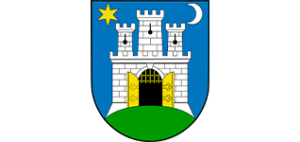The project ‘Urban Gardens’ was established in 2013 by the City of Zagreb to enable citizens to temporarily use small cultivable plots in the city for the production of food, spices and flowers for their own needs. Besides the sustainable use of the land owned by the city, the project has many positive impacts like improved availability of healthy food, protection of city nature and biodiversity, promotion of healthy lifestyle and creating new relationships between citizens. Nowadays, there are already 10 urban gardens in Zagreb, but due to high interest a few more gardens are planned. The process of distributing plots to citizens is placed through public calls in which socially disadvantaged citizens have an advantage.
| City’s physical geography | Location | – Bordered by Medvednica mountain and the Sava river (flooding risk, urban heat) – Relatively low altitude (~125m) |
| Climate | – Oceanic continental climate near the humid continental climate (average temperature: 12.9 C°) with relatively warm summers (average summer temperature: 26°) and relatively cold winters – Precipitation generally moderate throughout the year, average 880 mm/year |
Initiating context
While many plots in city ownership remain unused, waiting to be brought to the intended use, a few citizens are already taking advantage of such unused public spaces for having “illegal” urban gardens. Following the trends of world cities and requests of citizens, in the end of 2012, the City Office for the Strategic Planning and Development of Zagreb made an assessment of potential locations for “official” public urban gardens. After finding the most suitable locations, proposals for spatial organisation of each urban garden have been done. In 2013, the public call was published for the first Zagreb’s urban garden opened in Klara neighbourhood.
Project description
At the moment, there are 10 urban gardens in Zagreb, mainly on the edges of the city, with around 2,000 plots spread over the surface of 20 hectares. Each urban garden is placed on the land owned by the City. Citizens can use their plots until the planned use of the area is required. In case that construction of a planned building starts, the city will search for another location and arrange a new urban garden there. The plots are allocated on the basis of a public call organized by City Office for Agriculture and Forestry. Single plot areas are between 40 and 50 square meters. They are supplied with process water and are equipped with supporting facilities such as boxes for storing tools, composters, bins and water tanks. Each location also has a shared area provided for trainings, workshops, socializing and relaxing, which is equipped with tables and further infrastructure.
The plots are awarded for a period of two years, with the possibility of extension. Priority is given to socially vulnerable citizens such as the unemployed, welfare recipients and Croatian war veterans, as long as they do not have any other arable land owned, co-owned or leased. Also, during the allocation of plots, household size, place of residence and income are taken into account. The City Office for Agriculture and Forestry is offering help and knowledge of agricultural experts to all garden users. Communal guards are responsible for regular supervision of each plot usage. If someone uses his plot in an improper manner, the plot will be awarded to the user annotated next according to the waiting list.
Implementation process
Stage 1: Assessment of potential locations for public urban gardens as a respond to civil initiatives requesting
the space for urban gardening
Stage 2: Providing selected locations with basic infrastructure and facilities
Stage 3: Public call for allocating the plot in lease
Results
Given that more citizens as plots currently available have shown interest in urban gardening, the organization of additional urban gardens is already planned. Besides citizens, private companies have also found their interest in the project through sponsorship of urban equipment, storing tools or holding community parties placed in the gardens. Also, the partnership between citizens and the city is improved. The contribution of urban gardens to social, economic and environmental development is multi-fold, as urban gardens are:
- saving monthly budget
- making healthy and organic food available
- promoting healthy food and traditional food production
- making local communities more sustainable
- lowering carbon footprint
- conserving biodiversity
- improving inclusion of socially and economically vulnerable groups
- connecting people
- strengthening communities
- bringing people back to the nature
- developing new hobbies
- encouraging recreation
- improving partnerships between the City and citizens
- improving ‘city image’
Lessons learned
Project implementation was based on foreign and domestic experiences as urban gardens exist in many cities around the world. It is a relatively simple project that gives huge benefits to citizens. One of the perceived difficulties is that most of the gardens are located on the outskirts of the city as in the middle of the city it is hard to find empty land. However, in the case of Zagreb urban gardening is becoming very popular also in the center.
There are already several initiatives which are fighting for taking urban gardening more seriously. They consider urban gardens to be as important as other public spaces (e.g. parks, squares, recreational spaces) and require permanent designation of urban gardens into spatial planning documents.

